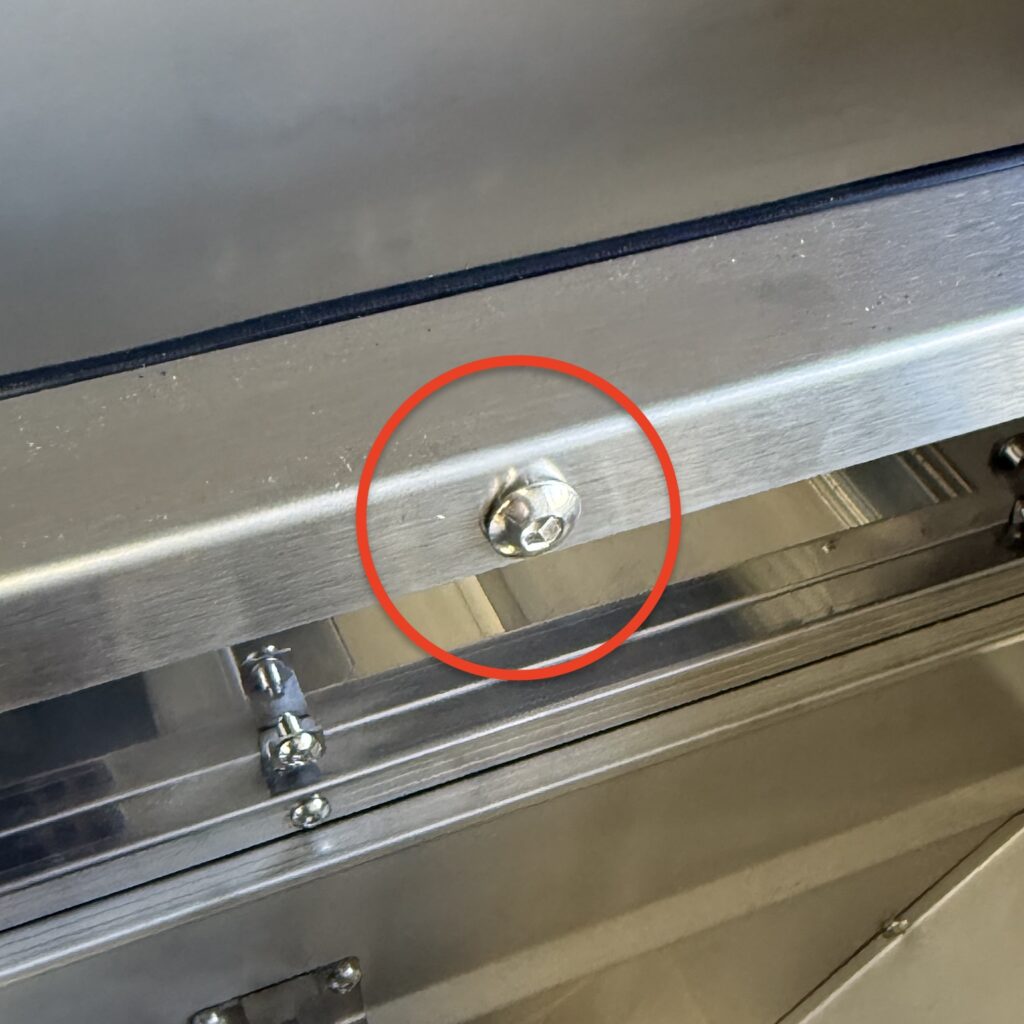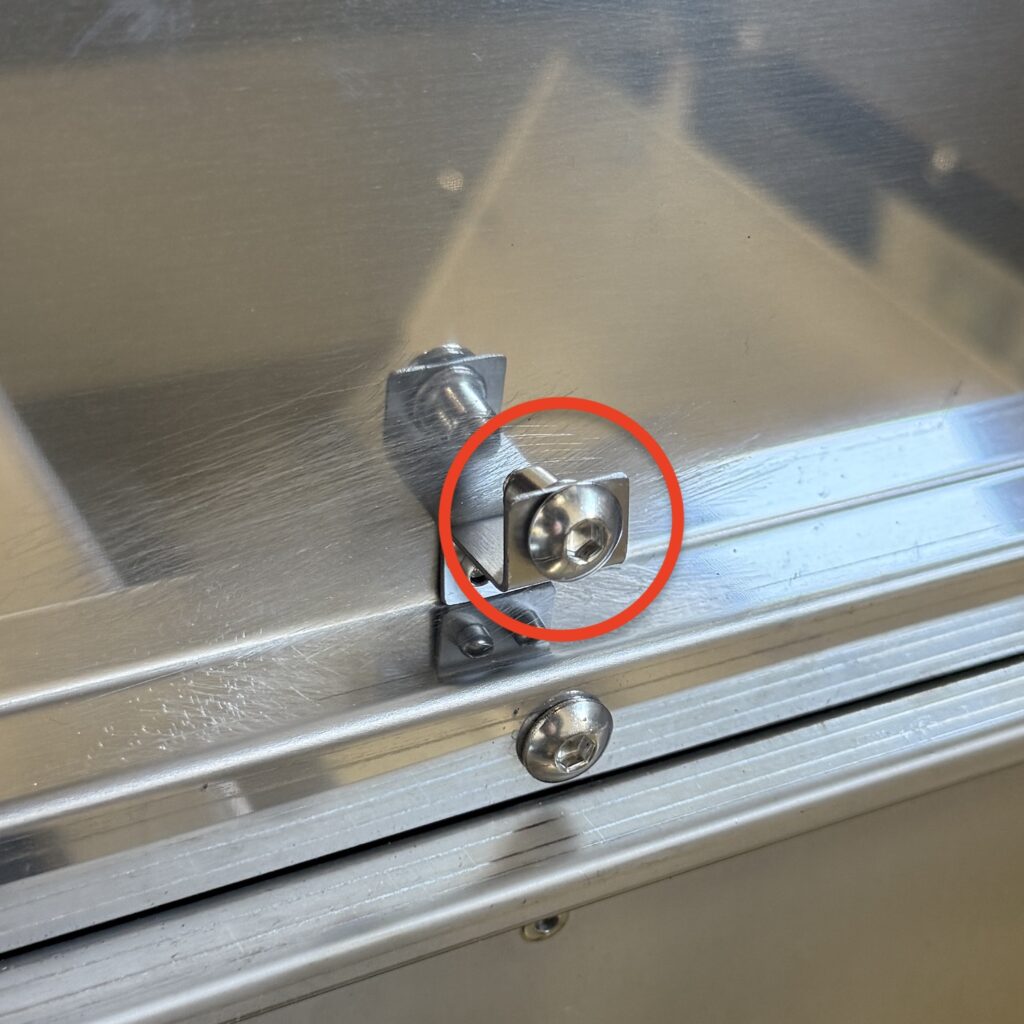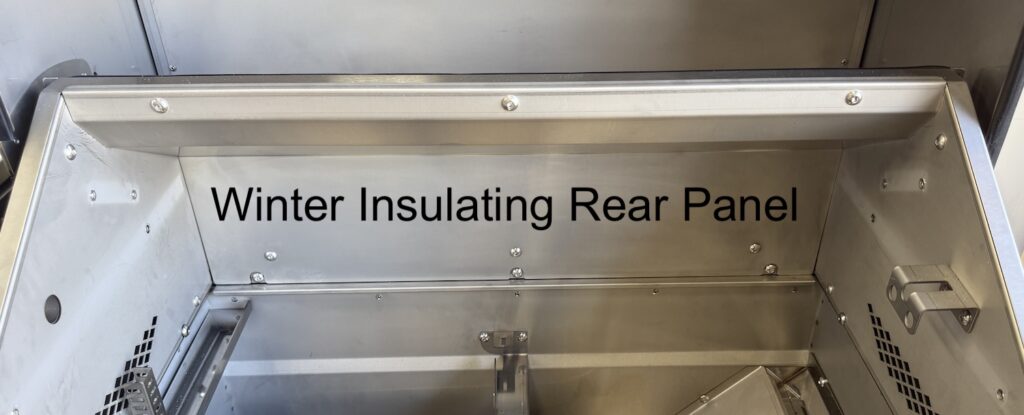
Rear Panel Overview
The inner rear wall of the Trimal S1 has an insulating panel which contributes significantly to the low heat loss properties of the grill – providing low pellet usage and fast heat up times even in cold weather.
The disadvantage of such great insulation is in warmer climates (or summer weather), the grill can struggle to operate at temperature below 100℃, as even the tiniest fire, consuming only 200 grams of wood pellets per hour, is still enough to heat the grill by 60-70℃.
The rear panel can be permanently removed, or just taken off in the summer months – reinstalled in the winter – providing the best of both worlds. Think of this panel as a insulating cover (warm jumper) for your grill when the weather is cold!
What difference will removing make?
On a 30℃ day, when the grill is set to a low temperature (<110℃), the difference between having the rear insulation rear panel in/out is around 10 to 15℃ (depending on the wind speed).
Grill still too hot?
If the grill is still running too hot, a simple method to “lose” more heat is to slightly chock the lid open by 5 to 10mm with a piece of wood, or rolled up aluminium foil (anything heat resistant is fine).
The grill is fan forced but there is air flow restriction through the wall panel exhaust, so air flow is limited – and air flow is a key part of the grill’s heat loss. The S1 has a much better lid seal than most other smokers on the market (most leak a lot around the lid). The lid seal is very useful in cooler weather and when the grill needs to heat up fast as it reduces heat loss – but when low temperature operation is required in hot weather the lid seal restricts heat loss too much.
By opening the lid a small amount (simulating a normal leaky lid), additional outward air flow (and heat loss) can occur allowing the temperature to run a little lower. Don’t open the lid too much as then cold air will flow in and impact the temperature regulation.
Will smoke flavour be lost?
No, as only a small amount of the air flow will leak from the lid, and most it will have already circulated around the grilling chamber (and the food) before exiting the exhaust vent and lid gap, so won’t negatively impact cooking results.
Why not just run the fans faster?
This sounds like a great idea, as it would increase heat loss, but increasing the air flow risks continually blowing out the tiny fire, resulting in regular temperature drops and subsequent temperature spikes when the fire relights.
Remember that the grill is burning a tiny little fire using only 200 grams of wood pellets per hour, so there is a fine balance between pellet delivery timing and fan speed to ensure it stays lit.
Removal Instructions
Side Rails
To allow the rear panel to slide out, the side rails and storage brackets for the top racks should be temporarily removed.
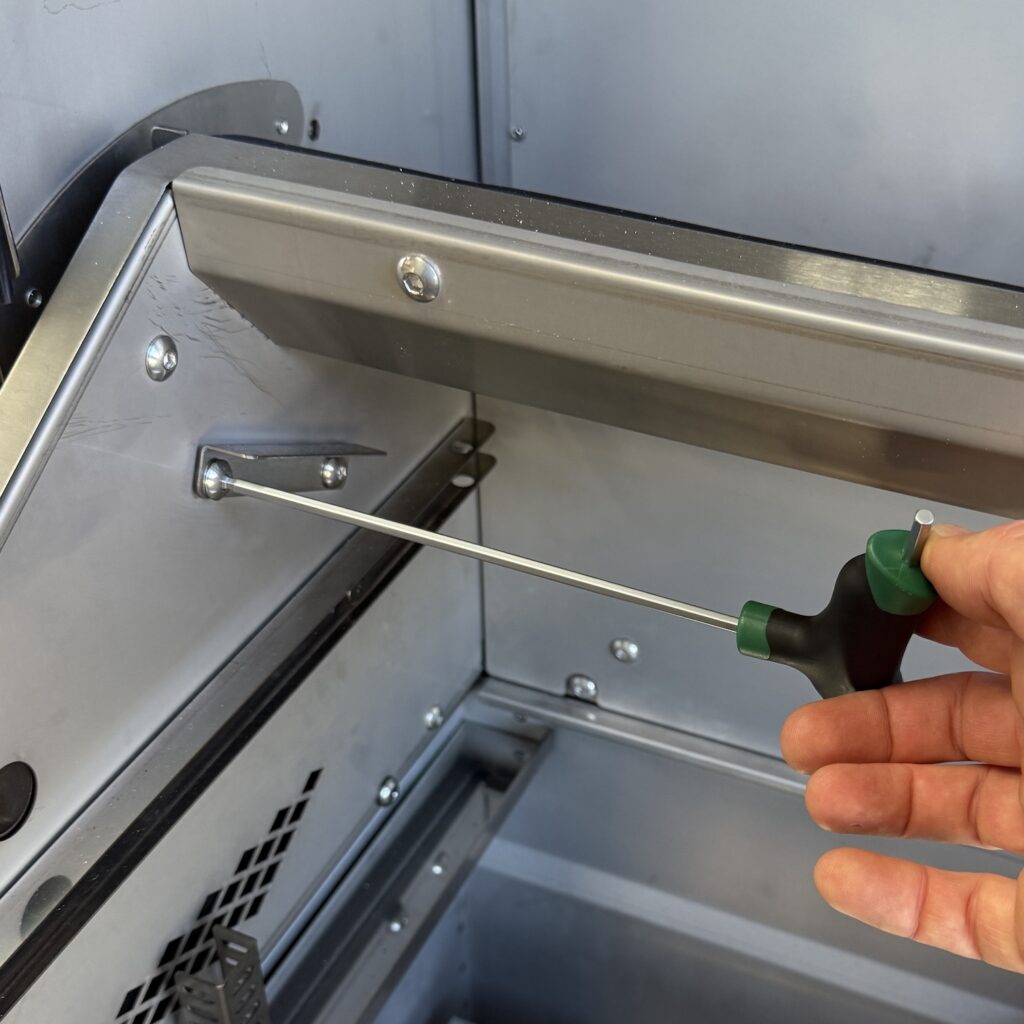
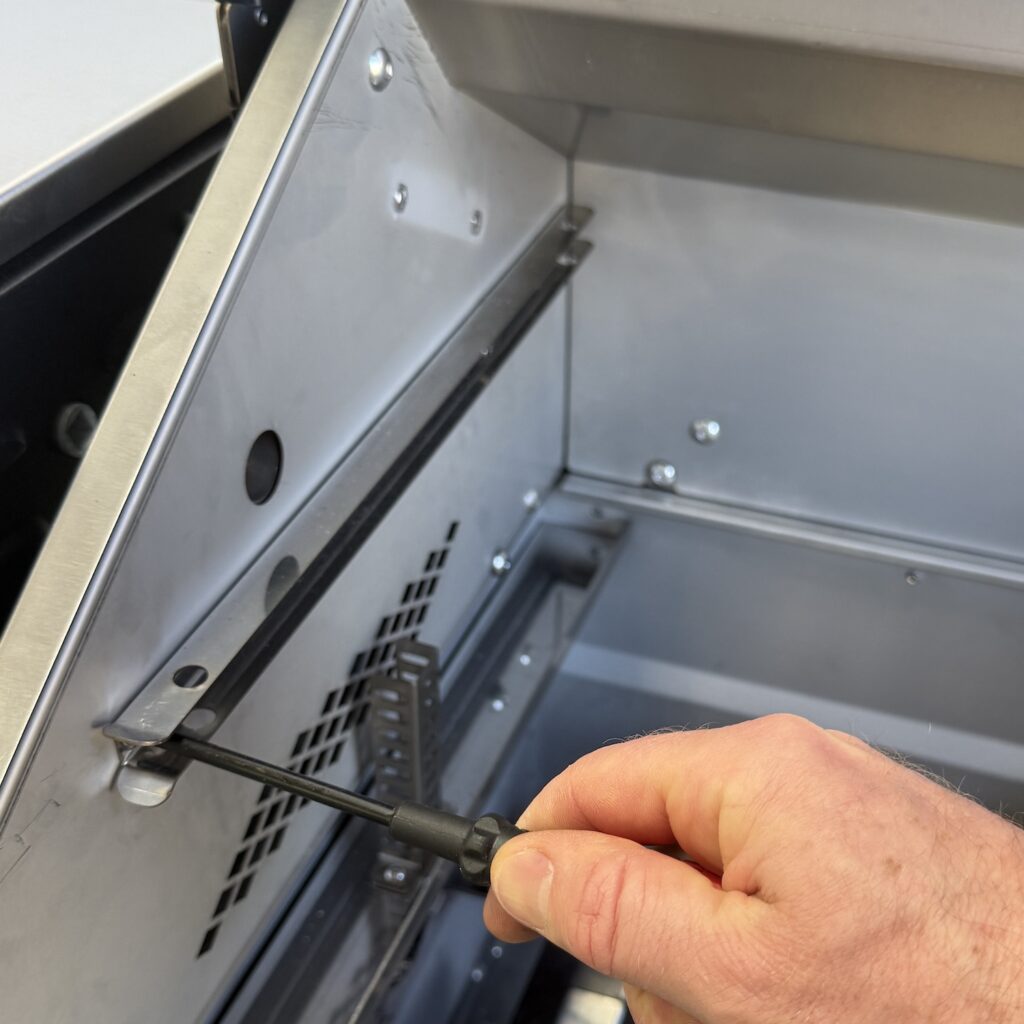
Rear Panel
Remove the 3 top and 3 rear screws that secure the rear panel in place.
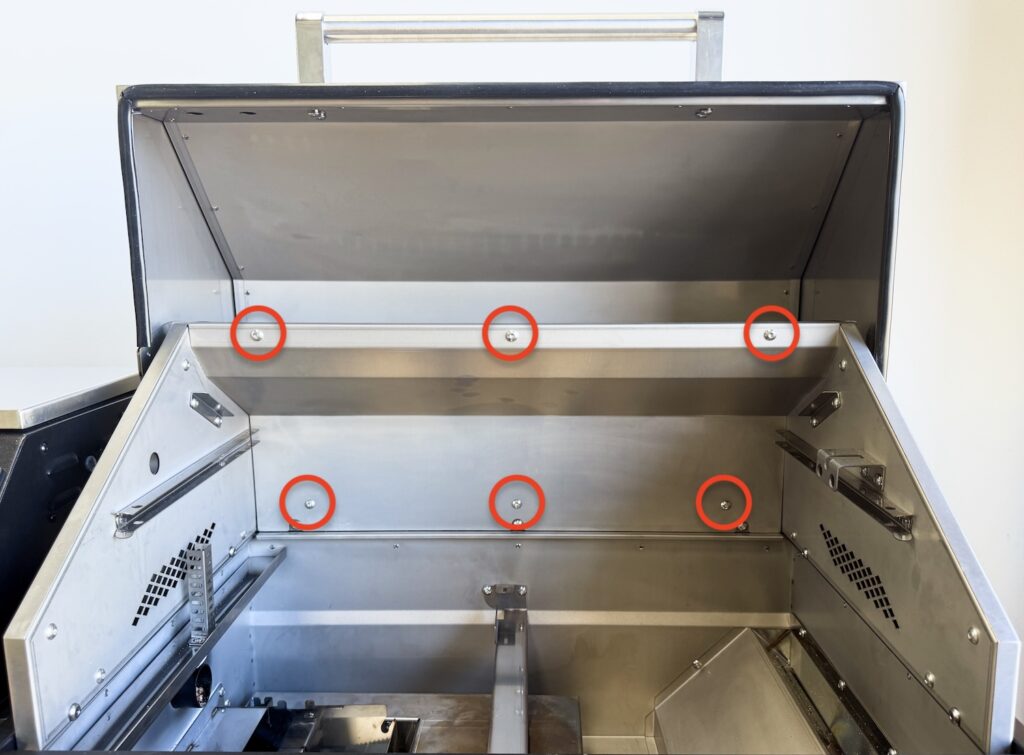
Slide the rear panel out.
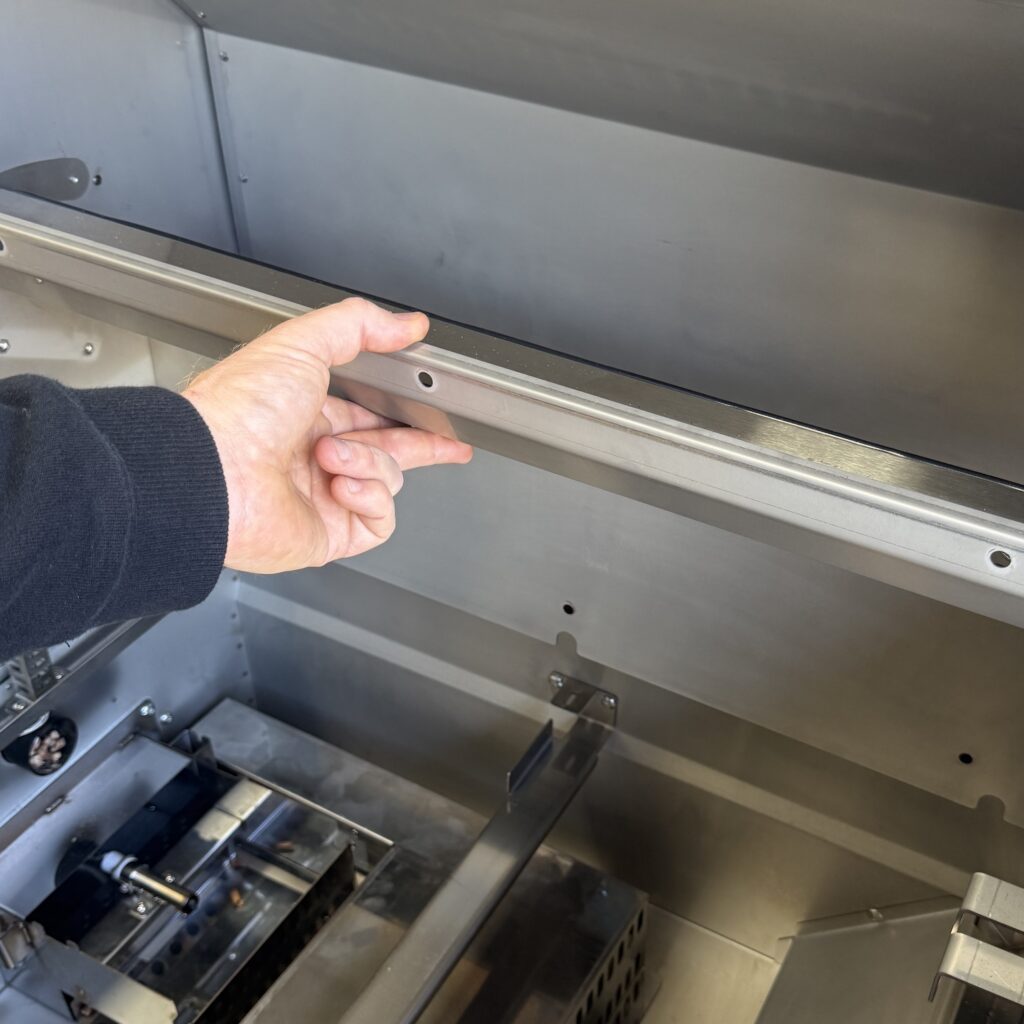
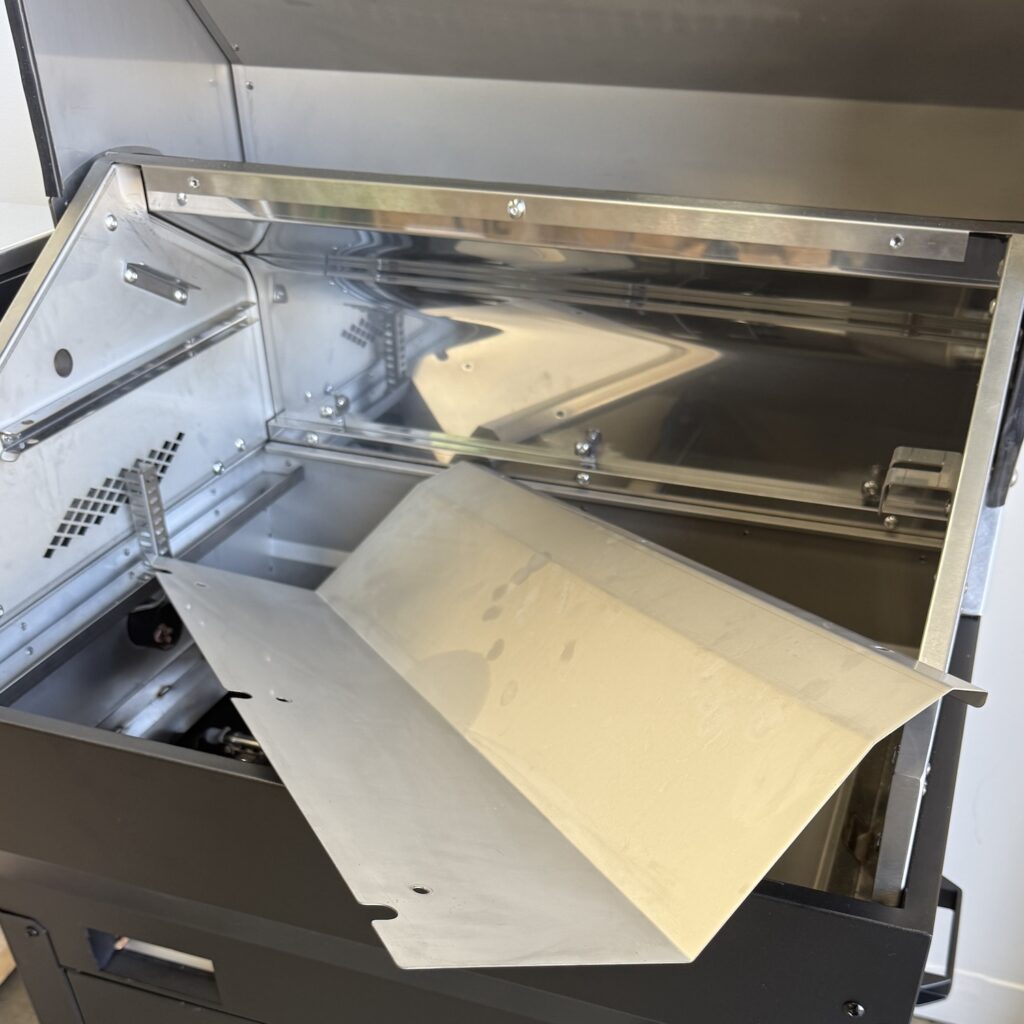
Return Screws
Put the rear and top 3 screws back in the holes, so neat and they don’t get lost.
